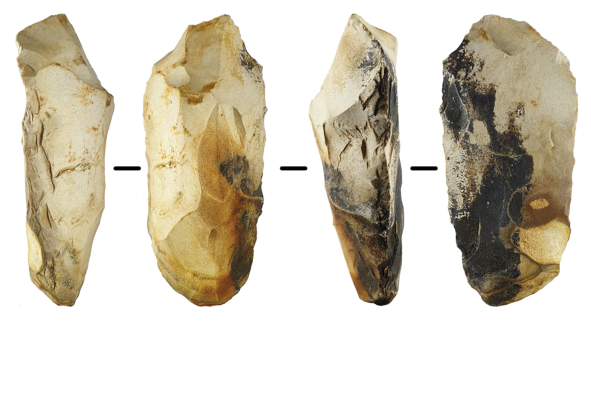An incredibly rare Roman-era object—made from a substance that was once worth more than its weight in gold—has been discovered at an archaeological site in the United Kingdom.
The item was unearthed during excavations conducted in 2023 by archaeologists and volunteers at the site of a Roman bathhouse located within the grounds of a sports club in the city of Carlisle, northern England.
Testing of the lump—made from a soft, mysterious, purple substance—subsequently revealed that it contained beeswax and an element known as bromine. This is a strong indication that it represents a solid sample of Tyrian purple—a man-made pigment that was highly valued in the ancient world.
The dye, which is purple in color, is secreted by several species of predatory sea snails that are found in the Mediterranean region. Producing Tyrian purple was an extremely difficult task. The process was complex and required the collection of thousands of marine snails. In fact, it is estimated that it up to 12,000 individual mollusks would need to be processed to produce just 1 gram of dye.
As a result, it was extremely expensive during Roman times, to the extent that it was worth more than gold, pound-for-pound. The pigment was generally reserved for use by the upper echelons of society.
"For millennia, Tyrian purple was the world's most expensive and sought after color," Frank Giecco, an archaeologist with mining consultancy company Wardell Armstrong, which has been involved in excavations at the Carlisle site, said in a press release.
Finding a solid sample, such as the one from Carlisle, is a particular unusual find, according to Giecco.
"It's the only example we know of in Northern Europe—possibly the only example of a solid sample of the pigment in the form of unused paint pigment anywhere in the Roman Empire," Giecco said in the release. "Examples have been found of it in wall paintings (like in Pompeii) and also some high status painted coffins from the Roman province of Egypt."
Tyrian purple is thought to have first been manufactured in the 2nd millennium B.C. by the Phoenicians—an ancient civilization of the Mediterranean region that originated in the coastal Levant region, primarily in an area that is now occupied by modern Lebanon.
The purple pigment was most famously produced in Tyre—a city located in Lebanon that is one of the oldest continuously inhabited settlements in the world. However, it was also manufactured in other regions of the Mediterranean, such as North Africa.
The Tyrian purple sample from Carlisle was likely used for painting frescos, Sarah Irving, a spokesperson for Cumberland Council, which has partnered with Wardell Armstrong on the excavation project, told Newsweek.
Sometimes the pigment was used to paint walls in grand public buildings, as well as the homes and properties of the elite. However, it was also used to dye clothes.
Excavations at the site of the Roman bathhouse have unearthed more than 2,800 significant finds to date, including hundreds of coins, carved gemstones and two monumental stone heads.
"Following the discovery of the two Roman monumental heads and the other precious items, the project is unearthing some fascinating and globally significant finds. More digs are planned, as well as the opportunity to visit the site and see the ground breaking work underway," Cumberland Council councilor Anne Quilter said in the press release.
Britain was occupied by Rome from A.D. 43 to A.D. 410—with Carlisle located along Hadrian's Wall, which marked the boundary between the empire and the unconquered territories to the north.
Do you have a tip on a science story that Newsweek should be covering? Do you have a question about archaeology? Let us know via science@newsweek.com.
Disclaimer: The copyright of this article belongs to the original author. Reposting this article is solely for the purpose of information dissemination and does not constitute any investment advice. If there is any infringement, please contact us immediately. We will make corrections or deletions as necessary. Thank you.



